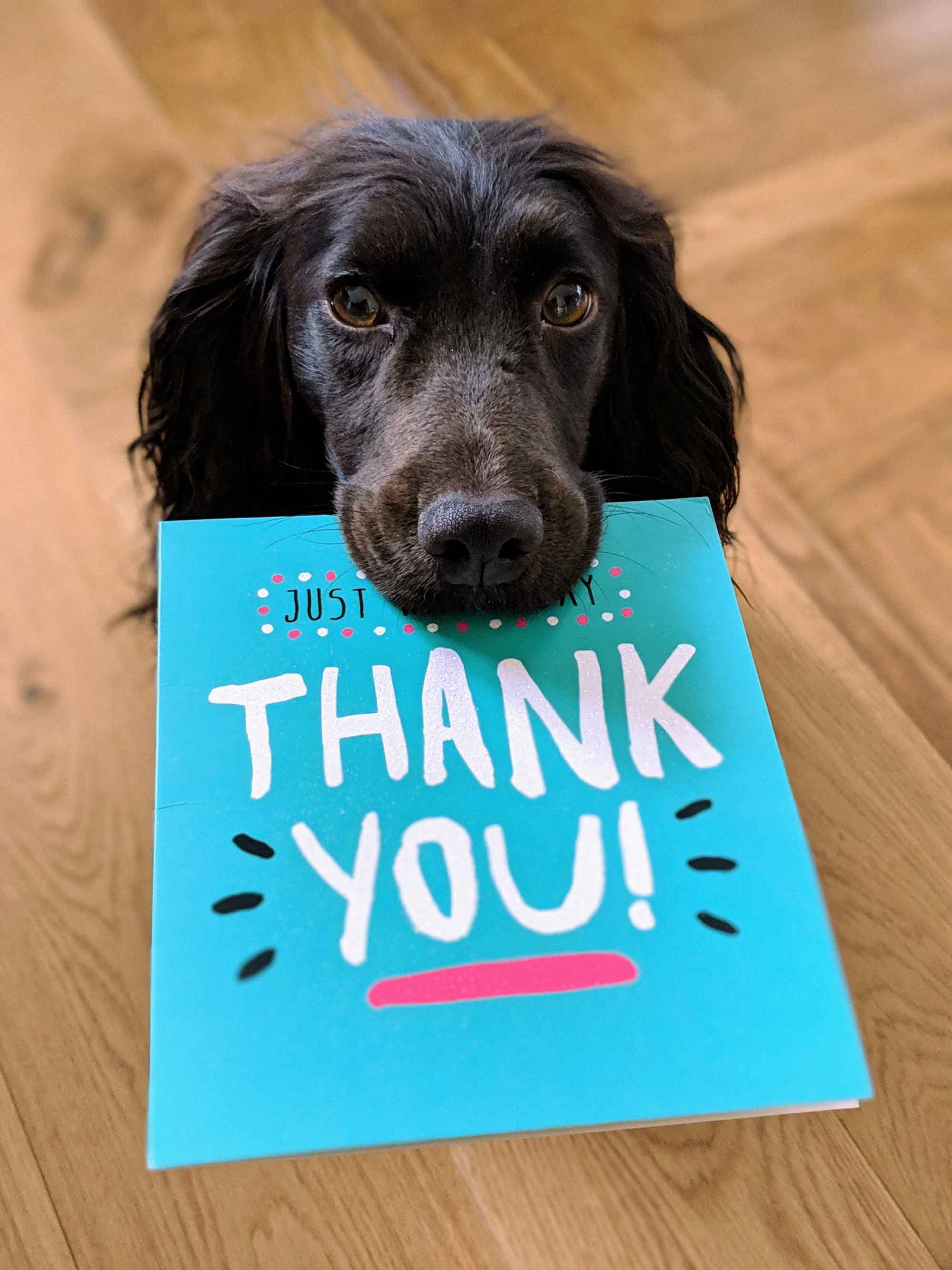July 2020
The Customer Loyalty Loop: Part 9
The Summary
This month we conclude our 9-part series on the customer loyalty loop. In conclusion, the best way to improve your customer loyalty loop is to ask your customers for feedback using the Net Promoter ScoreSM question, and then follow up with them. Commit yourself to creating a business culture that delivers outstanding customer experiences.

Photo by Csaba Balazs on Unsplash
- The new model for customer decision journey is the customer loyalty loop.
- Build your own customer loyalty loop throughout your business to ensure customers are engaged and heard.
- Employ processes that help you continually measure how customers feel about the experiences you’re delivering so you can work to keep them in your loyalty loop.
- Turn customer feedback into continuous improvement plans to deliver better experiences.
- Employ processes to identify dissatisfied customers, and proactively engage them to rectify issues, learn, and improve.
- Use industry-standard metrics like NPS® to gauge customer sentiment throughout their journey with your business.
- Delivering outstanding customer experiences drives customer loyalty, which in turn drives growth, profitability, and a stronger brand.
"To be successful in business we need to create outstanding customer experiences and outcomes by solving real customer problems and creating delighted customers."
John DiPippo
Owner & President
LoyaltyLoop LLC
Quantifying The Value of Online Reviews

Harvard Business School
Reviews, Reputation, and Revenue: The Case of Yelp.com
This study looked at restaurants and reviews on Yelp. They found a one-star increase in the Yelp rating (e.g. from 3.5 stars to 4.5 stars) for independent (non-chain) restaurants increases revenue by 5-9%.
1 star rating increase = 5-9% revenue increase (non-chain restaurants)
Read Full Report
Cornell University
School of Hotel Administration - Hotel Performance Impact of Socially Engaging with Consumers
This study looked at hotels and reviews on TripAdvisor, and found a one-star increase in the rating increases revenue by 39%. And the value of 1 additional review increases revenue by 0.5%.
1 star rating increase = 39% revenue increase (hotels)
Read Full ReportMaintaining Your Active Users
When staff leave your employ, you should remember to remove their access to your LoyaltyLoop account just like you remove their access to all other business systems to which they had access.
You can disable or delete a User account yourself quite easily, or your LoyaltyLoop Admin User(s) can instruct our Support Team to disable or delete a User account for you.
To manage this yourself is simple. Sign-in, and click Settings from under your username, then click User Settings. Either flip the Enable switch to NO (which prevents the User from accessing LoyaltyLoop, but leaves their account intact), or click the X to delete the User account entirely. That’s it.
While there is no charge for User accounts, it’s prudent to maintain a clean set of active and employed Users.

The Silent Ones: Working With Your Passive Customers
When you receive feedback from your customers, LoyaltyLoop will categorize them into one of 3 NPS (Net Promoter ScoreSM) categories: Promoter, Passive, or Detractor. Think of the practical application of these three categories using a barbecue metaphor. If you’re at a barbecue, and you mention you need a good place to buy some new widgets, a Promoter is the kind of person who stands out from the group and claims, “You need to go to Amazing Widgets.” You merely mentioned a future purchase, and this Promoter couldn’t wait to talk about how great Amazing Widgets is. In that same conversion, the Detractor will make himself/herself known by comments like, “You can go where you want, but I wouldn’t go to Shermer Widgets.” Promoters and Detractors need very little prompting to share their opinions.
A person who would place themselves in the Passive category wouldn’t contribute to the BBQ conversation, and if they say anything at all, they might ask if where to find more corn on the cob. Even the name feels grammatically very middle-of-the-road. If someone is a Promoter or is a Detractor, it implies action is being taken in some way. To use the same syntax and say “someone is a Passive” it leaves us with only an action-less label.
Acting on Promoters and Detractors is simple. Promoters give vibrant feedback that can be turned into testimonials, and if things go well, they also leave 5-star reviews on social media platforms. Detractors trigger a Poor Survey Alert email that can be acted upon immediately. (Configured under Settings > Alerts & Notifications.) But what can be done about Passives? Should anything be done? Are they simply customers who never rate anything to the highest degree?

Photo by Kelsey Chance on Unsplash
Passives are those who give you a proverbial grade of “C” or a “B” for how likely they are to recommend you: Answering only “Likely” on a 5-point scale, or a “7” or “8” on a 10-point scale. The important thing is to recognize they have provided quantifiable feedback even though they seem unassertive in their response. NPS is derived by subtracting the percentage of Detractors from the percentage of Promoters.
So, in a perfect score from 100 responses it might look like this:
100 Promoters, 0 Passives, and 0 Detractors = 100 NPS
And what if 20% of your responses are Detractors?
80 Promoters, 0 Passives, and 20 Detractors = 60 NPS
But what if 10% are Detractors and 10% are Passive?
80 Promoters, 10 Passives, and 10 Detractors = 70 NPS
In this simplified example, you can see how Passives can bump NPS by 10 points.
You’ve thanked your Promoters, and you’ve followed-up with your Detractors. What can be done next to address your Passive customers? Check the Customers page in LoyaltyLoop, are they return customers? If so, you know they like you. And the good news is that Passives are almost Promoters - they didn’t say they wouldn’t recommend you, they said that it was “Likely” they would recommend you. They're just waiting for that something that makes you stand out.
Read their feedback
Did they leave comments? Maybe there’s a pattern where only one or two improvements need to be made. Perhaps call the customer to have a more detailed conversation with them to understand a few key questions more deeply like, “What could we have done better?” And, “What could we have done for you to enthusiastically recommend us?”
Invest in their ideas
Can products and services be adjusted, if not, can the experience around those purchases be improved? Let them know their ideas will make a positive impact on your procedures and/or products.
Work the relationship
They might be passive in their response, but you needn’t be. Remember them when they come back; if you remember their name, or their last order, mention it. Offer to assign them to a single point-of-contact, either you or someone on your sales team, who can get to know them personally. This lets them know that they’re not just an invoice, and they deserve a better experience that only you provide.
Right now, your Passives might just be satisfied with the goods and services they’ve purchased, but you want them to be emotionally invested. They should get passionate about their relationship with you. Then at the next barbecue, perhaps, they’ll instinctively promote your business with enthusiasm and passion if the topic comes up. Now that’s loyalty.
Creative Uses of Customer Feedback

Photo by Howie R on Unsplash
Sometimes it seems like there aren’t enough hours in the day, and when LoyaltyLoop sends a new alert with feedback to look at, it’s very easy to skim the responses, make sure nothing is on fire, and then get back to the project at hand. Don’t let that feedback go! As always, be sure to publish testimonials to keep them current, and look for product suggestions and service improvements. But what else can you do?
Often social media, like Facebook, is used to make announcements or to show off recent work. Be sure to engage your customers in a conversation as well. If someone has suggested a new product or service, post the idea, and ask if that’s something other customers would be interested in. You may discover an untapped market. And if they see it while the product is still in concept form, your customers may suggest improvements before you dedicate any resources, saving you time and money to tune the concept to solve the real customer problem. Customers may also feel more engaged in the process, making them more likely to purchase the very item they had a hand in shaping.
What if you have two or more customer-suggested product ideas with roughly the same amount of development to bring to the table? Consider a custom survey to ask your customers to vote for the one in which they’re most interested, and why. If fifteen customers let you know they’re interested in Widget A and two customers let you know they’re interested in Widget B, then, all things being equal, Widget A should be the first to be developed and offered.
Your customer, Jane Lee, responds to every survey that has been sent to her, and you know you can always count on her feedback. And Joe Garcia not only takes every survey, but leaves comments each time, helping you populate your testimonial page. You can always count on them to reliably keep your response rates high. You already have them coming back, what else can you do to show your appreciation? Send some swag their way! A little extra something that keeps you in their minds when looking for the services you offer in the future. While there’s also T-shirts, pens, and fidget spinners, some companies hand out items people use, like microfibre cloths, stickers, plush animals, or even socks!
These are a handful of outside-the-box suggestions of what to do with your feedback other than keeping the status quo. And one last small thing, remember, if you have any product changes, be sure to update your product listing in your LoyaltyLoop survey. Make sure each Passive and Promoter Respondent sees what else you offer!